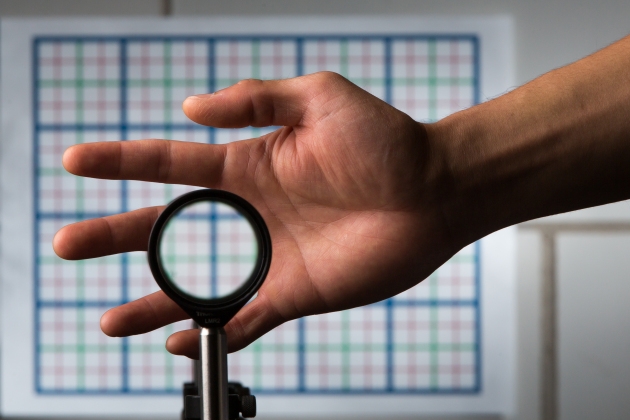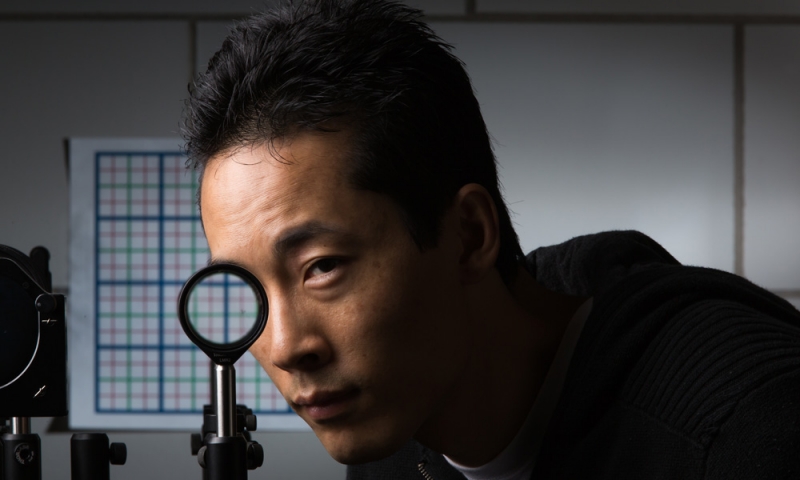While we have seen invisibility cloaking technology in the past, in many cases the tech required expensive, hard-to-find and advanced materials. Not only have these special products made cloaking technology extremely costly, they don't tend to work as well as you would hope and tend to suffer from a number of limitations including mobility and viewing angle. However, researchers from the University of Rochester are currently prototyping and developing cloaking tech that is seemingly much more practical in its construction.
Outside of some very intelligent math, the cloak requires little more than regularly available lenses. By positioning two pairs of lenses just right, the team has figured out how to reflect the light passing through in such a way that anything placed in between appears invisible. The particular lens arrangement can be scaled up to a much larger application than seen in the images and provides reliable cloaking at viewing angles up to 15 degrees. The team says, as far it knows, this is the only device that can do "three dimensional, continuous multi-directional cloaking."

It certainly isn't going to to bring mobile cloaking in terms of something someone could wear, as it requires the subject to be completely on axis (the same level) with the lenses. However, the team sees a number of much more practical applications the technology could be used for. The researchers suggest lens cloaking tech of this nature could help to eliminate blind spots for drivers on the road or even allow surgeons to see through their own hands during tricky and delicate procedures.
It is important to note, this tech is still a ways out and likely won't see real world application for sometime, but it sounds as though it could eventually offer up some very useful conveniences. You can see more in the demonstration video below:
